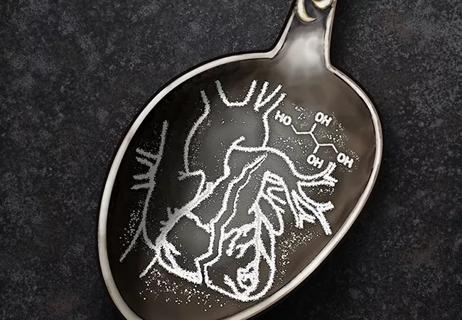Advertisement
Meta-analysis furthers controversy around guideline recommendations

Guideline recommendations for the use of anticoagulation with a vitamin K antagonist (VKA) in the three months after bioprosthetic valve implantation appear to not be supported by current evidence and need to be evaluated in a large randomized trial.
Advertisement
Cleveland Clinic is a non-profit academic medical center. Advertising on our site helps support our mission. We do not endorse non-Cleveland Clinic products or services. Policy
So concludes a systematic literature review and meta-analysis by Cleveland Clinic researchers published online in Heart on Aug. 3, 2016.
The latest relevant guidelines from the American College of Cardiology/American Heart Association, released in 2014, give VKA use in the first three months after implantation a class IIb recommendation in the setting of aortic bioprosthetic valves and a class IIa recommendation in the setting of mitral bioprosthetic valves.
“The rationale behind recommending a VKA during the first three months is based on the belief that there’s a pathophysiological potential for early thrombus formation, especially on the valve sewing ring before complete endothelialization occurs,” explains Cleveland Clinic cardiologist Milind Desai, MD, corresponding author of the meta-analysis. “But this question remains controversial.”
To explore that controversy, Dr. Desai and Cleveland Clinic colleagues searched five databases to identify all studies evaluating the benefit of a VKA (e.g., warfarin) versus either antiplatelet therapy or no therapy during the first three months after bioprosthetic valve implantation. They found 14 qualifying studies — two small randomized trials, 12 observational studies and one conference abstract — that collectively included 31,740 patients.
Meta-analysis of these 14 studies found no differences between patients receiving a VKA and patients receiving antiplatelet therapy or no therapy in any of the following outcomes within three to six months of valve implantation:
Advertisement
However, the incidence of major bleeding events was significantly higher in the VKA group (2.6 percent) than in the antiplatelet/no therapy group (1.1 percent) (odds ratio = 2.26; 95% CI, 1.67-3.05).
“There was no benefit of adding a VKA in terms of thromboembolism or mortality, and VKA therapy raised the risk of major bleeding,” says Dr. Desai, who is also Professor of Medicine at Cleveland Clinic Lerner College of Medicine. “This significant increase in risk with no apparent added benefit brings into question the recommendation of considering a VKA in the first three months after bioprosthetic valve implantation.”
He notes that because more than 90 percent of patients in the meta-analysis underwent implantation of aortic as opposed to mitral bioprosthetic valves, his team’s conclusions are directed primarily toward aortic bioprosthetic valve placement.
Dr. Desai notes the analysis had limitations, including the need to combine several treatment groups into two overarching comparator groups, with the result that the VKA group included some patients who received antiplatelet therapy plus a VKA and that the non-VKA group comprised both patients receiving no therapy and patients receiving antiplatelet therapy. Those limitations stem from the scarcity of published studies — particularly randomized trials — on this question. Notably, however, each of the two randomized trials was consistent with this meta-analysis in finding no benefit of VKA treatment.
This ambiguity leads the researchers to call for a large, well-designed randomized trial to answer the question conclusively.
Advertisement
“In the meantime,” says Dr. Desai, “clinicians should assess and advise patients on an individualized basis as to the best postoperative management strategy to reduce short-term thrombus risk after bioprosthetic valve implantation. This should include frank discussion that there appears to be no impact on thromboembolism or mortality but a potentially increased risk of major bleeding.”
Advertisement
Advertisement

Study authors urge reevaluation of the sweetener’s safety designation by food regulators

Surprise findings argue for caution about testosterone use in men at risk for fracture

Findings support emphasis on markers of frailty related to, but not dependent on, age
![GettyImages-1252287413 [Converted]](https://assets.clevelandclinic.org/transform/StoryPanel/350804b2-f1e4-4d97-a277-9629cf45af3e/23-HVI-4120348_redlining_650x450_jpg?w=3840&q=75)
Large database study reveals lingering health consequences of decades-old discrimination

Additional analyses of the two trials presented at 2023 ESC Congress

Prospective SPIRIT-HCM trial demonstrates broad gains over 12-month follow-up

An ACC committee issues recommendations to accelerate sluggish progress

Review of our recent experience shows it’s still a safe option